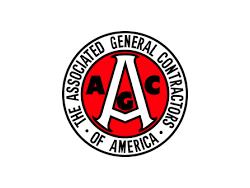April Construction Employment Rises In 235 Of 358 Metro Areas YOY
Arlington, VA, June 2, 2016—Construction employment rose between April 2015 and April 2016 in two-thirds of the nation's metro areas, while spending on most types of structures increased for the year despite a drop in the latest month, according to a new analysis of federal data on employment and construction spending released today by the Associated General Contractors of America.
Association officials said that many parts of the country continue to benefit from strong demand for construction services.
"Construction growth remains widely distributed by location and project type," said Ken Simonson, the association's chief economist. "However, job gains were uneven: many states included metros with large gains but also areas that lost jobs. Some of those metros might have added construction jobs if contractors had been able to find enough qualified workers. The dearth of skilled construction workers in many areas threatens to hold down the extent of job gains in the coming months."
There were construction employment gains in the past year in 235 out of 358 metro areas, losses in 67 areas, and no change in 56. Anaheim-Santa Ana-Irvine, California added the most construction jobs (14,900 jobs, 17%), followed by Orlando-Kissimmee-Sanford, Florida (8,800 jobs, 15%); New York City (7,800 jobs, 6%); and Phoenix-Mesa-Scottsdale, Arizona (7,200 jobs, 7%). The largest percentage gains occurred in Monroe, Michigan (30%, 700 jobs); El Centro, California (26%, 700 jobs); Urban Honolulu, Hawaii (20%, 5,000 jobs) and Haverhill-Newburyport-Amesbury Town, Massachusetts-New Hampshire (20%, 800 jobs).
The largest job losses from April 2015 to April 2016 were in Midland, Texas (-2,200 jobs, -8%), followed by Odessa, Texas (-1,900 jobs, -11%) and Omaha-Council Bluffs, Neb.-Iowa (-1,800 jobs, -7%). The largest percentage declines were in Bloomington, Illinois (-31%, -1,100 jobs); Dothan, Alabama (-16%, -500 jobs) and Fairbanks, Alaska (-14%, -400 jobs).
Construction spending increased 4.5% from April 2015 to April 2016 despite a drop of 1.8% from March to April, Simonson noted. Private residential spending increased 8.0% over the year; private nonresidential spending climbed 3.4%; and public construction spending rose 1.2%.
Association officials said both sets of data reflect relatively strong market conditions for the construction sector. The two main industry concerns remain the availability of qualified workers and the need for new investments in aging infrastructure.
